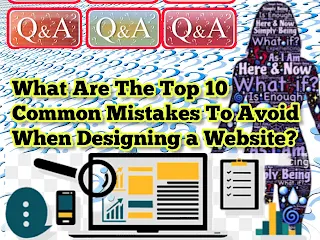Q. What Are The Top 10 Common Mistakes To Avoid When Designing a Website?
Designing a website effectively requires careful planning and attention to detail. Here are the top 10 common mistakes to avoid:
1. Lack of Clear Purpose:
Failing to define the website's primary purpose can confuse visitors. Clearly state your website's goals and ensure every element supports them.
2. Poor Navigation:
Complex or unclear navigation menus can frustrate users. Keep navigation simple and intuitive, with a clear hierarchy.
3. Slow Loading Times:
Slow-loading websites turn users away. Optimize images, use efficient code, and consider a Content Delivery Network (CDN) to improve speed.
4. Non-Responsive Design:
Neglecting mobile users is a grave error. Ensure your site is responsive, adapting seamlessly to various screen sizes.
5. Inadequate Content Planning:
Content is king. Plan your content strategy, including text, images, and videos, to engage and inform your audience effectively.
6. Overwhelming Design:
Too many colors, fonts, or graphics can make your site look cluttered. Stick to a consistent design with a limited color palette and typography.
7. Ignoring SEO:
Neglecting search engine optimization (SEO) can hinder your site's visibility. Research keywords, optimize meta tags, and create high-quality, shareable content.
8. Ignoring Accessibility:
Failing to make your site accessible to all users, including those with disabilities, is a major oversight. Follow web accessibility guidelines (WCAG) to ensure inclusivity.
9. Neglecting Mobile Optimization:
Mobile users are a significant portion of your audience. Ensure that your website is mobile-friendly and loads quickly on smartphones and tablets.
10. No Analytics Integration:
Without tracking user behavior and site performance, you won't know how well your site is doing. Integrate analytics tools like Google Analytics to gather valuable insights.
In summary, a successful website avoids these common pitfalls by having a clear purpose, user-friendly navigation, fast loading times, responsive design, quality content, SEO optimization, accessibility, mobile optimization, and analytics integration. By addressing these aspects, you can create a website that engages users and achieves its goals effectively.




Post a Comment